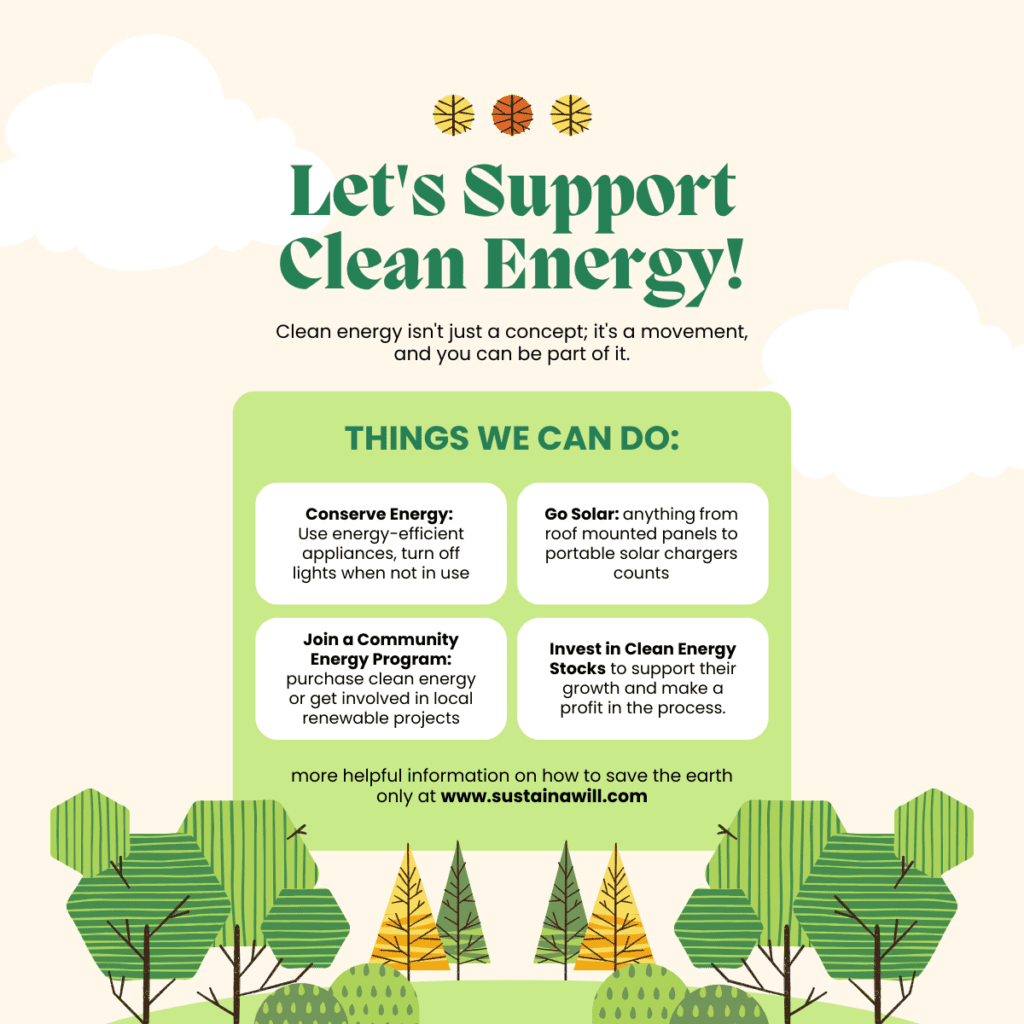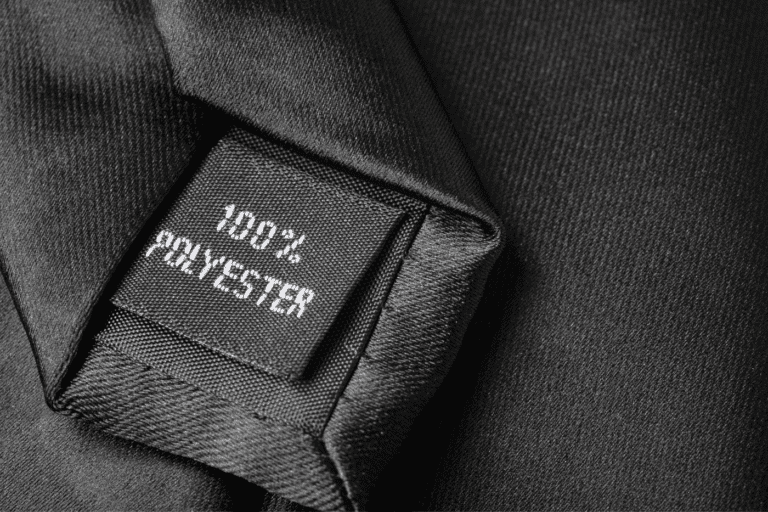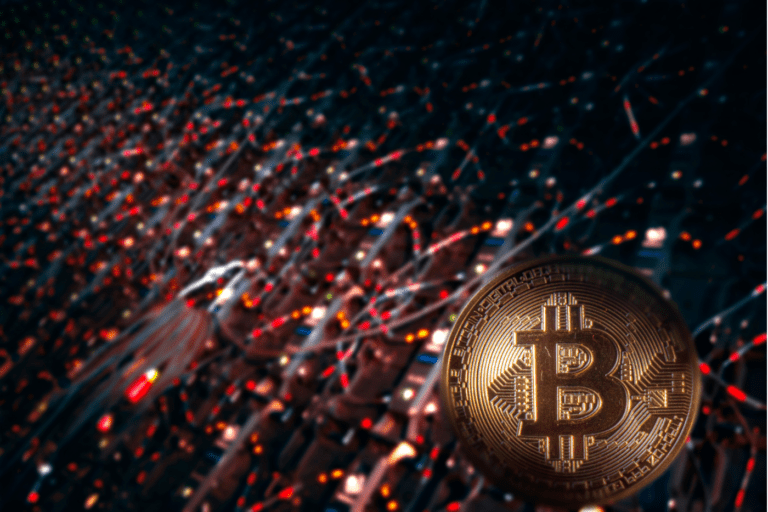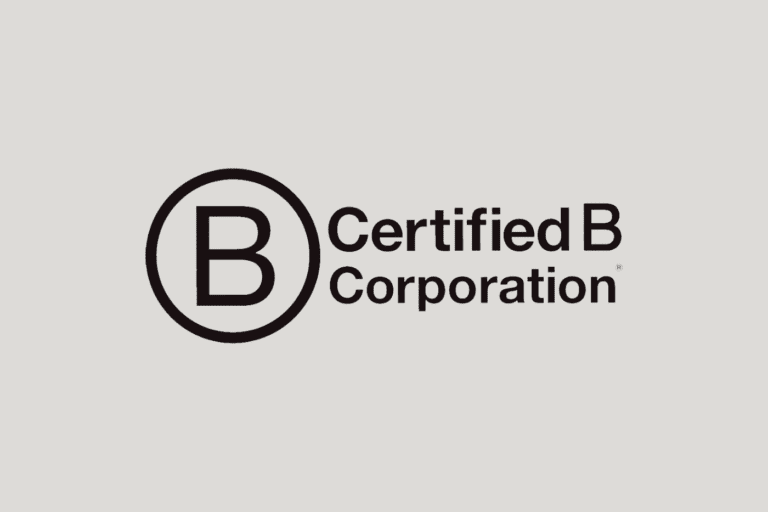Have you ever felt like clean energy is this buzzword you can’t quite wrap your head around? It’s like being lost in a sea of eco-friendly acronyms and sustainability jargon.
You know it’s essential, but the specifics remain a mystery. What’s the deal with clean energy, and why does it have everyone talking?
So, here’s your backstage pass to “Clean Energy 101” – a journey that’ll demystify the jargon, answer your burning questions, and empower you to be part of the green revolution. Join us as we light the path to a sustainable future.
Clean Energy Explained: What Is It Exactly?
Clean energy refers to power sources that produce little to no pollution or greenhouse gas emissions when generating electricity; it’s a critical pillar of a sustainable future.
In this section, we’ll dive into the concept of clean energy, exploring what it is and why it’s so essential in today’s world.
Why is it called clean energy?
- Clean energy earned its name for a good reason. Unlike traditional fossil fuels such as coal, oil, and natural gas, which release harmful pollutants and greenhouse gases when burned, clean energy sources produce minimal to no emissions. This minimal environmental impact is what makes these sources “clean.” They don’t contribute to air pollution, climate change, or the various health issues associated with fossil fuel emissions.
- Clean energy encompasses a range of technologies and resources, such as wind, solar, hydro, geothermal, and even nuclear energy (when properly managed). Wind and solar, in particular, have become poster children for clean energy due to their renewable and virtually emissions-free nature.
- These sources don’t deplete finite reserves or release harmful byproducts into the environment. Instead, they tap into the Earth’s natural cycles and this results in a significant reduction in carbon emissions and pollution, which is why clean energy is celebrated for its environmental friendliness.
Who invented clean energy?
The concept of clean energy, as we understand it today, doesn’t have a single inventor but rather results from the cumulative efforts of numerous innovators and scientists over time.
- Hydroelectric Power: Hydroelectric power, which harnesses the energy of flowing water, has been in use for over a century. Its development can be attributed to various engineers and inventors who refined the technology.
- Wind Energy: Wind energy has its roots in windmills that have been used for centuries to grind grain and pump water. In the late 19th and early 20th centuries, inventors like Charles F. Brush (read more about ‘the father of wind energy’ here) and Poul la Cour contributed to the development of wind turbines that generated electricity.
- Solar Energy: The history of solar energy is intertwined with several inventors. However, the modern technology began to take shape in the mid-20th century. Researchers at Bell Labs, for example, developed the first practical photovoltaic (PV) cell in 1954, paving the way for contemporary solar panels.
The concept of clean energy emerged in response to growing environmental concerns and the need for sustainable, low-impact energy sources. It is the result of a collective effort involving scientists, engineers, and innovators worldwide.
Clean energy is a dynamic field, continually advancing through ongoing research and technological developments, and it continues to shape our future.

Clean Energy vs. Renewable Energy: Understanding the Difference
Are you ready for a face-off between clean and renewable energy sources? Let’s break it down in a way that’s easy to grasp!
Clean Energy
- What it means: Clean energy produces minimal to zero pollution and emissions when making electricity.
- Examples: Think of solar panels, wind turbines, hydropower, geothermal, and even nuclear energy (when managed responsibly). They all fall under the clean energy umbrella.
Renewable Energy
- What it means: Renewable energy is all about tapping into resources that nature keeps on replenishing, like the sun, wind, and water.
- Examples: Solar power, wind energy, hydropower, and even bioenergy (made from organic materials) are great examples of renewables.
The Intersection of Clean and Renewable Energy
Where they meet:
Clean energy and renewable energy often intersect. Clean energy sources like solar and wind are also renewable, but renewable energy isn’t always perfectly clean (for example bioenergy can produce some emissions).
So, Which One Is Better?
Now, this is the big question, right? The thing is, clean energy and renewable energy aren’t really rivals. In fact, they often go hand in hand.
What’s essential is that both clean and renewable energy sources are fantastic options for a greener and more sustainable future. They reduce our impact on the planet and ensure we leave a beautiful world for generations.
So, there you have it. Clean energy, renewable energy—they’re all on the same team, working to make the world a cleaner, healthier, and more sustainable place. It’s a win-win! 🌿💡😀

Clean Energy Examples: Diving into Sustainable Resources
Let’s discover the various sources of clean power and how they work their magic to make our planet a better place.
What Are The 3 Most Popular Types of Clean Energy?
It’s time to unveil the shining stars of clean energy, the power sources making waves around the world. Let’s dive into the three most popular types of clean energy:
1. Solar Energy
- Why it’s popular: Solar energy is practically a household name. It’s everywhere, from rooftop solar panels on homes to massive solar farms in deserts. People love it because it’s abundant, sustainable, and can be harnessed by both individuals and large-scale power plants.
- How it works: Solar panels, typically made of photovoltaic cells, capture sunlight and convert it into electricity. No emissions, no pollution—just pure, clean energy.
2. Wind Energy
- Why it’s popular: Ever seen those majestic wind turbines spinning gracefully in the breeze? Wind energy is a favorite because it’s renewable, eco-friendly, and can be harnessed in various locations, both onshore and offshore.
- How it works: Wind turbines use the kinetic energy from the wind to spin their blades, which then generate electricity. It’s like turning wind into power, and it’s impressively clean.
3. Hydropower
- Why it’s popular: Hydropower has been around for a while, and it’s still a fan favorite. It’s a renewable and reliable source of energy that can be scaled from small streams to mighty rivers.
- How it works: By damming rivers or using their natural flow, hydropower turns the energy of moving water into electricity. It’s a bit like nature-powered electricity.
These 3 clean energy sources have captured the world’s attention because they’re effective, eco-conscious, and align with our quest for a more sustainable future. So, whether it’s the sun, wind, or water, they’re all part of the green energy revolution. 💡🌬️🌊
Other Types of Clean Energy
Geothermal Energy
How it works: Deep within the Earth, there’s a lot of heat. Geothermal energy taps into that heat, using it to produce electricity. It’s a bit like Earth’s own central heating system. Clean and naturally sustainable.
Nuclear Energy
There are two main types of nuclear energy: fission and fusion.
Nuclear Fission:
Process: In nuclear fission, the nucleus of an atom is split into smaller parts, releasing a large amount of energy. This process is commonly used in nuclear power plants, where uranium-235 or plutonium-239 isotopes are often used as fuel.
Cleanliness: While nuclear fission doesn’t produce direct carbon emissions during electricity generation, it does generate radioactive waste that requires careful management. The potential for accidents, such as the ones at Chernobyl and Fukushima, highlights safety concerns.
Renewability: Uranium, the primary fuel for nuclear fission, is a finite resource. Although it is not classified as a renewable resource, advancements in breeder reactor technology may enhance the utilization of uranium resources.
Nuclear Fusion:
Process: Nuclear fusion involves combining two light atomic nuclei to form a heavier nucleus, releasing a significant amount of energy. This process is the same reaction that powers the sun and other stars.
Cleanliness: Nuclear fusion is often considered cleaner than fission because it produces minimal long-lived radioactive waste. Additionally, fusion reactions don’t produce greenhouse gases or contribute to climate change.
Renewability: The primary fuel for nuclear fusion, isotopes of hydrogen like deuterium and tritium, is widely available. Although it doesn’t rely on finite resources like uranium, the technology to sustain a controlled and practical fusion reaction is still under development.
Cleanliness Verdict:
- Nuclear fusion is generally considered cleaner than fission due to its minimal radioactive waste and absence of greenhouse gas emissions during the energy-producing reactions.
Renewability Verdict:
- Nuclear fission relies on finite resources like uranium, making it non-renewable in the traditional sense. Nuclear fusion, on the other hand, utilizes isotopes of hydrogen that are abundant, positioning it as a potentially sustainable and renewable energy source once viable fusion reactors are developed.
In summary, while nuclear fission has been utilized for electricity generation, nuclear fusion holds promise as a cleaner and potentially renewable energy source once technological challenges are overcome.
Clean Energy Storage
How it works: Clean energy can also mean efficiently storing energy. Technologies like advanced batteries, pumped hydro storage, and thermal storage help ensure that clean energy is available when we need it, even when the sun isn’t shining or the wind isn’t blowing.
As we dive into these clean energy examples, you’ll discover not only how they work but also the incredible potential they hold for a greener and more sustainable future. Buckle up, we’re in for a clean and exciting ride! 🌞💨💧🌋⚛️🔋

Which Clean Energy Is the Best? Comparing Sustainable Options
We’ve explored various clean energy sources, each with its unique strengths and characteristics. But which one is the best for a sustainable and green future? Let’s break it down with a comparative analysis to find out.
1. Solar Energy
For a more in-depth analysis of the most important pros and cons of solar energy check out our Solar Energy: The Most Important Pros and Cons (2024) blog post.
Advantages:
Abundant, accessible, and can be harnessed on a small or large scale. Low operating costs and virtually zero emissions.
Considerations:
Intermittent (depends on sunlight), requires space for panels, and initial installation costs.
2. Wind Energy
Advantages:
Abundant, efficient, and suitable for large-scale power generation. Low emissions and operational costs.
Considerations:
Intermittent (depends on wind), potential visual and noise impacts, and location-dependent.
3. Hydropower
Advantages:
Reliable and efficient, suitable for baseload power. Low emissions, long lifespan, and flood control benefits.
Considerations:
Environmental impact (dam construction), limited sites available, and habitat disruption.
4. Geothermal Energy
Advantages:
Reliable and consistent, low emissions, and suitable for both electricity generation and heating.
Considerations:
Location-dependent, initial drilling costs, and potential for resource depletion.
5. Nuclear Energy
Advantages:
Low greenhouse gas emissions, high energy output, and reliable baseload power.
Considerations:
Nuclear waste disposal challenges, safety concerns, and high capital and decommissioning costs.
So, which clean energy source is the best?
The answer is highly individual and depends on factors like location, energy demand, and environmental priorities. In reality, the ideal approach often involves a mix of these clean energy sources, tailored to specific needs and conditions.
The key to a sustainable future is diversity, adaptability, and a commitment to reducing our environmental impact. By carefully selecting and combining clean energy options, we can build a greener and more resilient world for generations to come.
The best choice is one that considers the bigger picture and keeps our planet’s well-being front and center. 🌿🌎💡
Clean Energy Benefits: Health, Economy, and Sustainability
Clean energy isn’t just about being eco-conscious; it’s a game-changer in various aspects of our lives, promoting a healthier, wealthier, and more sustainable world.
- Healthier Lives: Clean energy means cleaner air. By reducing pollution and greenhouse gas emissions, it improves air quality and public health. Fewer respiratory issues and a lower carbon footprint? That’s a win for everyone.
- Economic Growth: The clean energy sector isn’t just eco-friendly; it’s also a major job creator. From manufacturing solar panels to maintaining wind turbines, the industry stimulates economic growth and innovation.
- Stable Energy Supply: Clean energy sources are often local, reducing dependence on imported fossil fuels. They offer a more stable energy supply, reducing the vulnerability of power grids to disruptions.
- Climate Change Mitigation: Clean energy is a potent weapon against climate change. By reducing greenhouse gas emissions, it helps slow down global warming, protecting our planet’s delicate balance.
- Savings for Consumers: Clean energy technologies are becoming more affordable, resulting in reduced energy costs for consumers. Solar panels on your roof can mean lower electricity bills and even potential income from selling excess power back to the grid.
- Technological Innovation: Clean energy fosters innovation. It drives research and development in areas like energy storage, which benefits not only the energy sector but also various other industries.
- Sustainability: Clean energy and sustainability go hand in hand, creating a symbiotic relationship that shapes a greener future. Clean energy minimizes environmental harm, conserves finite resources, promotes a circular economy, empowers communities, and contributes to the global collaborative effort toward sustainability.
The synergy between clean energy and sustainability is undeniable. It’s not just about environmental responsibility; it’s about building a world that thrives on clean, efficient, and sustainable energy practices, for the benefit of all living beings and our beautiful planet. 🌿💼🏡🌎✨
The Path Forward: How You Can Support Clean Energy
Clean energy isn’t just a concept; it’s a movement, and you can be part of it. Here are practical steps for individuals and communities to get involved:
- Go Solar: Consider installing solar panels on your home. Many regions offer incentives and financing options to make it affordable.
- Support Wind Power: If you can’t install wind turbines, support local wind energy projects and advocate for more wind power in your area.
- Conserve Energy: Use energy-efficient appliances, turn off lights when not in use, and insulate your home to reduce your energy consumption.
- Advocate for Change: Get involved in local and national initiatives promoting clean energy policies and regulations.
- Invest in Clean Energy Stocks: Consider investing in clean energy companies to support their growth and make a profit in the process.
- Join a Community Energy Program: Many communities have programs that allow you to purchase clean energy or get involved in local renewable projects.

Conclusion: Clean Energy 101 – A Beacon of Hope for a Sustainable Future
Clean energy isn’t just a solution; it’s a beacon of hope for a sustainable future. It’s a way to address those nagging concerns you have about the environment and the well-being of future generations. So, what’s the takeaway?
- Your Part Matters: Every action counts. By embracing clean energy, you’re not just reducing your carbon footprint; you’re contributing to a global movement.
- A Brighter Tomorrow: Clean energy is the path to a world with cleaner air, healthier lives, and sustainable prosperity. It’s the answer to those pain points we all feel when we worry about our planet.
- Take Action Today: It’s time to take the knowledge you’ve gained here and turn it into action. Support clean energy, advocate for change, and be part of the solution.
Clean energy isn’t just a choice; it’s a responsibility. It’s a path to a better, brighter, and more sustainable future. Let’s take that path together. 🌞🌿🌎💡







